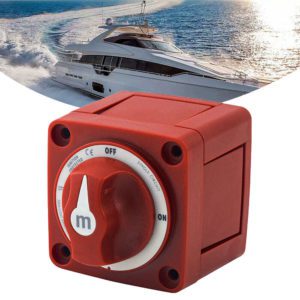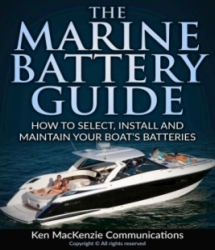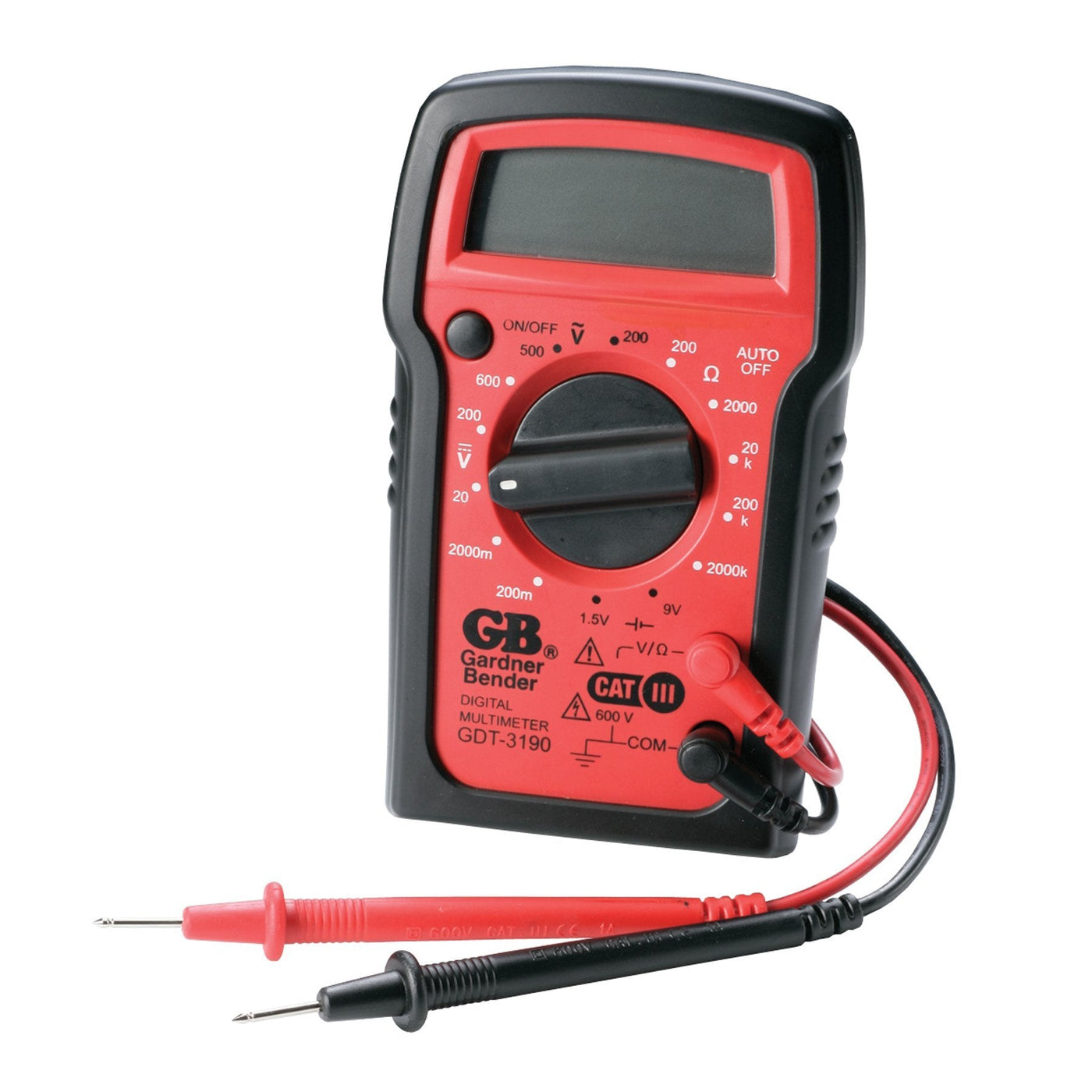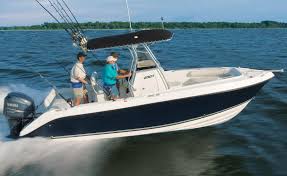A Boat Battery Switch – A Crucial Component
As a boat owner, a reliable and efficient electrical system is essential to ensure a safe and comfortable experience on the water. A boat battery switch is a crucial component of this system, allowing you to control the power flow between multiple batteries and electrical systems on board.
Choosing the right boat battery switch can be overwhelming, given the various types, models, and features available in the market.
As a professional, I have created this comprehensive guide to help you make an informed decision about the right boat battery switch for your vessel.
In this guide, we will explore the different types of boat battery switches, including marine battery switches, boat battery selector switches, dual battery switches, boat electrical switches, boat battery disconnect switches, battery switch wiring, and boat battery isolator switches.
We will also discuss the factors to consider when choosing a boat battery switch and the installation and maintenance tips for optimal performance.
Amazon’s Best Selling Boat Battery Switches
Key Takeaways:
- A boat battery switch is a crucial component of your vessel’s electrical system, allowing you to control the power flow between multiple batteries and electrical systems onboard.
- There are various types of boat battery switches available, including marine battery switches, boat battery selector switches, dual battery switches, boat electrical switches, boat battery disconnect switches, battery switch wiring, and boat battery isolator switches.
- When choosing a boat battery switch, important factors to consider are the size and type of your boat, the number of batteries you have, your specific power requirements, the durability, reliability, and ease of use of different switch models.
- Proper installation and maintenance are crucial for the optimal performance of your boat battery switch.
- Advancements in boat battery switch technology offer enhanced features and functionalities, such as smart switches, remote control capabilities, and integrated monitoring systems.
Understanding Boat Battery Switches
Before delving into the different types of boat battery switches available, it’s important to have a basic understanding of what they are and why they are crucial for any boat’s electrical system.
A boat battery switch is a device that enables boaters to control power flow between multiple batteries and electrical systems on board. Essentially, it allows boaters to switch between different power sources and disconnect them when not in use, thereby extending battery life and preventing potential electrical hazards.
One of the most common types of boat battery switches is the marine battery switch, which is specifically designed for use in marine environments and is known for its durability and reliability. Marine battery switches are typically made of high-quality materials that can withstand harsh marine conditions, including saltwater, extreme temperatures, and moisture.
Overall, a boat battery switch is a crucial component of any boat’s electrical system, and choosing the right one is essential for optimal performance and safety.
“A boat battery switch is a device that enables boaters to control power flow between multiple batteries and electrical systems on board.”
Amazon’s Best Selling Boat Battery Switches
Types of Boat Battery Switches
When it comes to selecting a boat battery switch, it’s essential to consider the type that best fits your boating needs. Two common types of boat battery switches are the boat battery selector switch and the dual battery switch.
Boat Battery Selector Switch
A boat battery selector switch, also known as a marine battery switch, allows you to choose between two or more batteries. This type of switch is ideal for boats that have multiple battery banks and need to select a specific battery for a particular purpose, such as starting the engine or powering electronic devices.
| Advantages | Considerations | |
|---|---|---|
| Single switch control | Conveniently control multiple batteries with a single switch. | May not be suitable for boats with high power demands. |
| Easy installation | No need for additional wiring or components. | Suitable for smaller boats with basic electrical systems. |
Dual Battery Switch
A dual battery switch, also known as a boat battery disconnect switch, allows you to switch between two batteries while isolating them from each other. This type of switch is ideal for boats that have two batteries and need to ensure that one battery is always fully charged to power essential systems, such as navigation and safety equipment.
| Advantages | Considerations | |
|---|---|---|
| Prevent battery drain | Helps prevent battery drain by isolating batteries from each other. | May require additional wiring and components. |
| Easy-to-use control | Offers simple and easy-to-use control of batteries. | Requires careful monitoring of battery levels to avoid power loss. |
Both boat battery selector switches and dual battery switches come in different models and sizes, so it’s crucial to choose the one that best fits your boat’s specific requirements. Consider factors such as the size and type of your boat, the number of batteries you have, and your power requirements when making a decision.
Boat Battery Disconnect Switches and Proper Wiring Techniques
Installing a boat battery disconnect switch is a practical way to prevent battery drain and protect your boat’s electronics, especially during storage periods. A boat battery disconnect switch allows you to isolate the battery from the electrical system, ensuring that no power is drawn from the battery when not in use.
When installing a boat battery disconnect switch, proper wiring techniques are crucial to ensure optimal performance. It’s important to use the correct gauge wire and connectors and follow the manufacturer’s installation instructions.
| Step | Description |
|---|---|
| 1 | Locate the battery switch in a dry and accessible location close to the battery bank. |
| 2 | Disconnect the negative cable from the battery. |
| 3 | Mount the switch securely to the bulkhead or panel using screws or bolts. Ensure a tight and secure fit to prevent vibrations or damage. |
| 4 | Connect the positive (red) cables from the battery bank to the switch using the appropriate connectors. Connect the remaining positive (red) cables from the electrical devices to the switch. |
| 5 | Connect the negative (black) cable from the battery to the engine block or other grounding point. Connect the remaining negative (black) cables from the electrical devices to the engine block or other grounding point. |
| 6 | Reconnect the negative cable to the battery and test the switch for proper functionality. |
It’s essential to test the switch after installation to ensure that it’s working correctly. To test the switch, turn it to the “off” position and measure the voltage between the battery’s positive and negative terminals. If the voltage is zero, the switch is working correctly.
In summary, a boat battery disconnect switch is an essential component of your boat’s electrical system. Proper installation and wiring techniques are crucial for optimal performance and safety. By following the manufacturer’s instructions and testing the switch after installation, you can ensure that your boat’s battery and electronics are protected from damage and drain.
Amazon’s Best Selling Boat Battery Switches
Ensuring Safety with a Boat Battery Isolator Switch
In the world of boating, safety is always a top priority. That’s why it’s essential to have a boat battery isolator switch installed in your vessel’s electrical system. A boat battery isolator switch serves as a safety mechanism that separates the batteries to prevent electrical accidents.
When using multiple batteries on your boat, it’s crucial to isolate them to avoid discharging them completely. If your boat’s batteries are connected, and one fails, it can drain the other, leaving you with no power. This situation can be dangerous, especially if you’re out at sea, and it can also damage your boat’s electrical components.
That’s where a boat battery isolator switch comes in handy. It allows you to separate the batteries when they’re not in use, preserving their power and reducing the risk of over-discharging. This function also ensures that if one battery fails, the other battery will remain functional, providing you with enough power to return to shore safely.
Types of Boat Battery Isolator Switches
There are two main types of boat battery isolator switches: the diode-based isolator switch and the solenoid-based isolator switch.
The diode-based isolator switch is a simple, reliable, and cost-effective solution that uses diodes to prevent the batteries from discharging into each other. This type of switch allows the batteries to be charged simultaneously from a single alternator or charger. However, it has one significant disadvantage: it can cause a voltage drop, leading to a reduced charging rate.
The solenoid-based isolator switch, on the other hand, uses electromagnetic switches to disconnect the batteries from each other. This type of switch offers a more efficient charging rate and a higher amperage rating. It also has fewer voltage drops than the diode-based isolator switch and allows for more control over the charging process. However, it is more expensive and complex to install.
Installation of a Boat Battery Isolator Switch
Installing a boat battery isolator switch can be a challenging task, especially if you’re not familiar with electrical systems. It’s recommended that you hire a qualified marine electrician to do the installation for you.
If you’re a DIY enthusiast and want to install the isolator switch yourself, be sure to follow the manufacturer’s instructions carefully. Ensure that the switch is compatible with your boat’s electrical system and has the appropriate amperage rating.
It’s also crucial to adhere to safety precautions while installing the switch. Turn off all power sources, wear protective gear, and be careful not to touch any live wires.
Maintenance of a Boat Battery Isolator Switch
Proper maintenance of a boat battery isolator switch is essential to ensure its optimal performance. Inspect the switch regularly for any signs of corrosion, loose connections, or damage. Clean the switch contacts with a wire brush to remove any dirt or debris that may affect its performance.
If you notice any issues with the switch, such as difficulty in changing the battery charge status, have it checked by a professional marine electrician immediately.
Overall, a boat battery isolator switch is a crucial component of your boat’s electrical system, and it’s essential to have it installed if you’re using multiple batteries. Choosing the right type of switch and following proper installation and maintenance practices will ensure your boat’s safety and optimal performance.
Factors to Consider When Choosing a Boat Battery Switch
Choosing the right boat battery switch requires careful consideration of various factors. The size and type of your boat, the number of batteries you have, and your specific power requirements are all critical factors to consider.
When selecting a boat battery switch for your vessel, it’s vital to choose a switch that can handle the amperage of your electrical system. A marine battery switch is designed to handle the harsh marine environment and provide reliable performance. If you have multiple batteries, a battery switch for boats that can handle a dual battery setup is also essential.
Size and Type of Boat
The size and type of your boat will dictate the size and type of battery switch you need. For example, a small fishing boat with a single battery will require a different switch than a larger yacht with multiple batteries. You should also consider the power requirements of your boat’s electrical system, as this will determine the amperage rating of the switch.
Number of Batteries
If your boat has multiple batteries, you will need a switch that can handle the load of both batteries. A boat battery selector switch is an excellent option for boats with two batteries, allowing you to select which battery to use or to use both batteries simultaneously. For boats with more than two batteries, a dual battery switch is a better option.
Durability and Reliability
The durability and reliability of your boat battery switch are also essential factors to consider. Look for a switch that is made of high-quality materials, is built to withstand the harsh marine environment, and has a proven track record of reliability. A boat electrical switch that fails in the middle of the water can be dangerous and costly.
Ease of Use
Your boat battery switch should be easy to use and operate. It should have clear and concise labeling and be easy to understand even under stressful situations. A boat battery disconnect switch should be easy to locate and use in the event of an emergency.
Overall, choosing the right boat battery switch requires careful consideration of various factors. By keeping these factors in mind, you can select a switch that meets your specific needs and provides reliable performance for years to come.
Installation and Maintenance Tips for Boat Battery Switches
Proper installation and maintenance are crucial for getting the most out of your boat battery switch. Here are some tips to ensure optimal performance:
Installation
- Before installation, disconnect the negative battery cable from your boat’s battery.
- Select a location for the switch that is easily accessible and dry.
- Read the installation instructions carefully and follow them step-by-step.
- Use the appropriate wire size for your switch and ensure all connections are tight and secure.
- Test the switch before use to ensure it is working properly.
For more detailed instructions, consult the manufacturer’s manual or seek professional installation services.
Maintenance
Proper maintenance can help extend the life of your boat battery switch. Here are some maintenance tips:
- Regularly inspect the switch for any signs of damage or corrosion.
- Clean the switch periodically with a mild soap and water solution.
- Check the connections for tightness and corrosion and clean as needed.
- Test the switch periodically to ensure it is working correctly.
By following these installation and maintenance tips, you can keep your boat battery switch in top condition and ensure a safe and reliable boating experience.
Advancements in Boat Battery Switch Technology
As technology continues to advance, so does the world of boat battery switches. In recent years, manufacturers have introduced new features and capabilities to enhance the functionality and convenience of these essential components of a boat’s electrical system.
Smart Switches
One of the most significant advancements in boat battery switch technology is the introduction of smart switches. These switches utilize advanced electronics to provide intuitive control over a boat’s electrical system, allowing users to monitor and manage power usage from a central location.
Smart switches offer a range of features, such as real-time monitoring of battery levels, remote control capabilities, and automatic power management to optimize battery usage and prevent draining.
Remote Control Capabilities
Remote control features are becoming increasingly popular in modern boat battery switches. These switches allow boaters to control the various electrical systems on their boats – such as lights, pumps, and radios – at the touch of a button, without having to be physically present at the switch.
This feature is especially useful for boaters who need to turn on or off certain systems from a distance or switch between multiple batteries quickly. Additionally, it can help conserve battery life by ensuring that only the necessary systems are turned on at any given time.
Integrated Monitoring Systems
Another significant advancement in boat battery switch technology is the integration of monitoring systems. These systems provide real-time data on the status of a boat’s batteries, including voltage, current, and temperature.
Integrated monitoring systems allow boaters to keep an eye on their batteries’ health, ensuring that they are functioning optimally and identifying potential issues before they become major problems. Some systems even provide alerts when battery levels are running low, indicating that it’s time to recharge or replace the batteries.
Selecting the Right Boat Battery Switch for You
Choosing the right boat battery switch is a crucial decision that requires careful consideration of various factors. By understanding the different types of switches available, evaluating your boat’s specific power requirements, and considering your individual preferences, you can select the perfect battery switch for your vessel. In this summarized guide, I will provide you with recommendations based on the different types of switches discussed earlier.
Marine Battery Switch
If you have a single battery system and are looking for a basic, affordable switch, a marine battery switch is an excellent option. They are easy to install and maintain, and their simple design allows you to turn your battery on or off with just the flip of a switch. I recommend the Blue Sea Systems 6007 M-Series, which is suitable for marine applications and features a durable design.
Boat Battery Selector Switch
If you have multiple batteries, a boat battery selector switch is the perfect choice for you. They allow you to choose between two or more batteries and determine which one to use at any given time. This feature is particularly useful for boats with large electrical loads or extended periods of use. I recommend the Guest 2111A, which is easy to install and provides reliable performance.
Dual Battery Switch
A dual battery switch is an excellent option if you want to be able to charge two batteries simultaneously. They provide a simple and efficient way to alternate between batteries and ensure that they are always charged and ready for use. I recommend the Perko 8501DP, which is a popular choice among boaters and provides excellent durability and reliability.
When choosing a boat battery switch, it’s essential to consider the size and type of your boat, the number of batteries you have, and your specific power requirements. Additionally, you should evaluate the durability, reliability, and ease of use of different switch models. By weighing these factors carefully, you can make an informed decision and select a battery switch that meets your needs and enhances your boating experience.
Video: Boat Battery Switch Explained
“The right boat battery switch can make all the difference in simplifying your marine electronics and ensuring on-board safety.”
Conclusion
As I conclude this comprehensive guide, I hope that I have provided you with all the information you need to choose the perfect boat battery switch for your vessel. From understanding the basics of boat battery switches to exploring the different types, factors to consider, and installation and maintenance tips, we have covered it all.
Remember that selecting the right boat battery switch is crucial for simplifying your marine electronics and ensuring on-board safety. By considering important factors such as the size and type of your boat, the number of batteries you have, and your specific power requirements, you can confidently choose a switch that meets your needs.
Proper installation and maintenance practices are also crucial for optimal performance, so be sure to follow the step-by-step instructions and safety precautions provided. Additionally, stay up-to-date with advancements in boat battery switch technology to ensure you’re taking advantage of the latest features and functionalities.
Make an Informed Decision
When it comes to boat battery switches, there is no one-size-fits-all solution. It all depends on your specific boating scenarios and requirements. By considering the different types, features, and factors discussed in this guide, you can make an informed decision that is tailored to your needs.
Whether you’re looking for a marine battery switch, a boat battery selector switch, or a dual battery switch, remember to prioritize safety, durability, reliability, and ease of use. With these considerations in mind, you can confidently select a boat battery switch that meets your needs, and enjoy peace of mind knowing your boat’s electrical system is in good hands.
FAQ’s
What is a boat battery switch?
A boat battery switch is a crucial component of your vessel’s electrical system. It controls the flow of power between multiple batteries and electrical systems on board.
What types of boat battery switches are available?
There are various types of boat battery switches, including boat battery selector switches and dual battery switches. Each type has its own features, advantages, and considerations.
Why should I consider using a boat battery disconnect switch?
A boat battery disconnect switch offers benefits such as preventing battery drain and protecting your boat’s electronics. Proper wiring and installation are essential for effective use.
What is the purpose of a boat battery isolator switch?
A boat battery isolator switch is important for isolating batteries and preventing electrical accidents. There are different types available, each with specific installation requirements.
What factors should I consider when choosing a boat battery switch?
Factors to consider include the size and type of your boat, the number of batteries you have, and your specific power requirements. Durability, reliability, and ease of use are also important considerations.
How do I install a boat battery switch?
Proper installation requires following step-by-step instructions, including proper wiring techniques and safety precautions. It is recommended to consult the manufacturer’s guidelines for specific switch models.
How do I maintain a boat battery switch?
Regular maintenance is important for optimal performance. Tips include checking connections, cleaning terminals, and ensuring proper insulation. Following the manufacturer’s recommendations is advised.
What advancements have been made in boat battery switch technology?
Advancements include features like smart switches, remote control capabilities, and integrated monitoring systems. Keeping up with the latest innovations can enhance your boating experience.
How do I select the right boat battery switch for me?
Consider the information provided in the previous sections, including types, features, and factors. Recommendations based on specific boating scenarios and requirements can be helpful in making a decision.
Why is choosing the right boat battery switch important?
Choosing the right boat battery switch simplifies your marine electronics and ensures on-board safety. Making an informed decision based on proper understanding and considerations is essential.
As an Amazon Affiliate I earn from qualifying purchases. MarineBatteryGuide.com is a participant in the Amazon Services LLC Associates Program, an affiliate advertising program designed to provide a means for sites to earn advertising fees by advertising and linking to Amazon.com.
Links on this boat battery switch page are sponsored affiliate links and the owner makes commission if you buy after clicking these links. The owner is not a bona-fide user of a boat battery switch. However, he has thoroughly researched the boat battery switches and provided a personal opinion only. This disclosure is in accordance with the Federal Trade Commission’s 16 CFR, Part 255: “Guides Concerning the Use of Endorsements and Testimonials in Advertising.”





